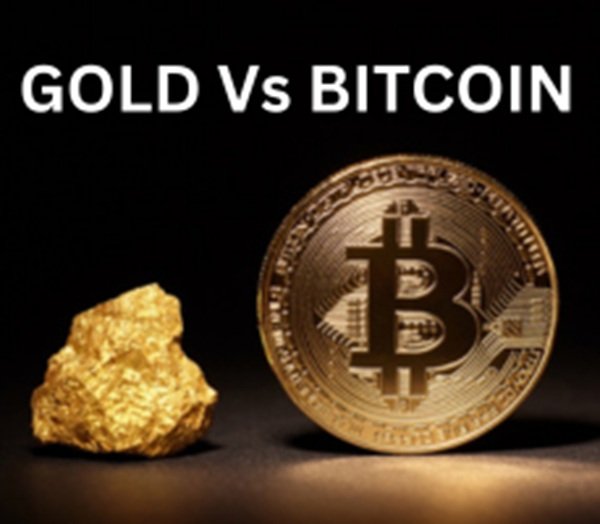The world of investments has never been more diverse, offering options that range from traditional assets like gold to digital innovations such as Bitcoin. Both gold and Bitcoin have gained prominence as stores of value, yet their nature and appeal differ significantly.
Peter Schiff and I debate Bitcoin vs Gold: What is inflation? What is Fiat Currency? What properties do free market actors seek in a good money? How do Bitcoin and Gold compare across the five monetary properties of divisibility, durability, recognizability, portability, and scarcity? Where will Bitcoin and Gold be 100 years from now? Which money will outperform in the years ahead?
Investors today find themselves weighing the merits of each, especially in uncertain economic times. While gold has been a cornerstone of wealth preservation for millennia, Bitcoin has emerged as a disruptive force in the digital age. This article dives deep into the comparisons to help you decide which might be the better choice for your portfolio.
Gold’s history is as old as civilization itself. For thousands of years, it has symbolized wealth and power. From its use in ancient coins to modern-day jewelry, gold’s allure lies in its intrinsic value and universal recognition. Empires have been built and wars fought over gold, showcasing its significance as a global standard of wealth. Even today, central banks hold vast reserves of gold to back their economies. Its tangibility gives investors a sense of security; holding physical gold can feel like holding wealth in your hand. In times of economic instability, gold has always been a safe haven, providing a buffer against inflation and currency devaluation.
In stark contrast, Bitcoin represents the cutting edge of financial technology. Introduced in 2009, Bitcoin operates entirely in the digital realm, free from the control of central banks or governments. Often referred to as “digital gold,” Bitcoin’s value proposition lies in its decentralized nature and its finite supply of 21 million coins. Unlike gold, which can be mined indefinitely (albeit at a decreasing rate), Bitcoin’s scarcity is programmed into its code, making it deflationary by design. This unique characteristic has fueled its rise as an alternative store of value.
When comparing the investment appeal of gold and Bitcoin, their differences become even more pronounced. Gold is tangible, allowing investors to physically hold their wealth, while Bitcoin exists solely in the digital world, accessible through secure digital wallets. This difference affects how each asset is stored and safeguarded. Gold requires secure vaults, insurance, and often high storage costs. Bitcoin, though digital, requires its own form of security through private keys and protection against cyber threats. Each has its vulnerabilities, making the choice between them a matter of personal preference.
Scarcity plays a crucial role in the value of both assets. Gold’s limited availability comes from its natural occurrence on Earth, while Bitcoin’s supply is dictated by its blockchain protocol. This programmed scarcity has led many to see Bitcoin as a modern counterpart to gold. However, the paths these assets take to achieve value differ. Gold’s value is rooted in its physical properties and historical significance, while Bitcoin’s worth is largely driven by its utility, adoption, and belief in its technology.
Volatility is another aspect that sets gold and Bitcoin apart. Gold has a long-standing reputation for stability, maintaining its value over centuries. Its price fluctuations are generally mild, making it an ideal choice for conservative investors. Bitcoin, on the other hand, is notorious for its wild price swings. Its volatility has created fortunes but has also led to significant losses, making it a more suitable option for risk-tolerant investors.
The utility of each asset also differs greatly. Gold has practical applications in industries such as electronics, dentistry, and aerospace, apart from its dominant use in jewelry. Bitcoin’s primary utility lies in its ability to facilitate digital transactions and its potential to revolutionize the global financial system. While gold’s uses are tangible, Bitcoin’s utility is tied to its technological framework and the promise of decentralization.
Liquidity is another factor that investors consider when choosing between gold and Bitcoin. Gold is widely traded across the globe, and its liquidity is unmatched. You can easily buy or sell gold in almost any country, making it an accessible asset. Bitcoin, though highly liquid in the digital economy, faces challenges in jurisdictions where cryptocurrencies are restricted or regulated. Despite this, the rise of cryptocurrency exchanges has made Bitcoin increasingly easier to trade, even for beginners.
As inflation continues to erode the value of fiat currencies, both gold and Bitcoin have emerged as potential hedges. Gold’s reputation as a hedge against inflation is well established, as its value often rises when currencies weaken. Bitcoin is still relatively new in this role, but its deflationary nature has attracted investors looking for alternatives to traditional assets. While it may not yet rival gold’s track record, Bitcoin’s growing adoption suggests it could play a significant role in combating inflation in the future.
Environmental considerations also weigh into the debate. Gold mining has long been criticized for its environmental impact, including deforestation and water pollution. Similarly, Bitcoin mining requires significant energy consumption, sparking concerns about its carbon footprint. Efforts are underway in both industries to address these challenges, with sustainable mining practices and the use of renewable energy sources gaining traction.
Experts often have polarized opinions when comparing gold and Bitcoin. Traditionalists view gold as the ultimate safe-haven asset, emphasizing its enduring value and reliability. Bitcoin advocates, however, highlight its transformative potential and the opportunities it offers in a digital-first world. Both camps present compelling arguments, leaving it up to individual investors to decide which aligns with their financial goals and risk tolerance.
Rather than seeing gold and Bitcoin as rivals, some experts argue they can coexist in a well-diversified portfolio. Gold provides stability and a hedge against market downturns, while Bitcoin offers growth potential and exposure to emerging technologies. By combining both, investors can strike a balance between security and opportunity, benefiting from the strengths of each asset.
In conclusion, the debate between gold and Bitcoin ultimately boils down to personal preference and investment strategy. Gold’s timeless appeal and stability make it a cornerstone of wealth preservation, while Bitcoin’s innovative design and growth potential position it as a frontier asset. Understanding their unique characteristics and how they fit into your financial goals is key to making an informed decision. Whether you lean towards the tangible security of gold or the digital promise of Bitcoin, both assets offer unique advantages in today’s dynamic investment landscape.




